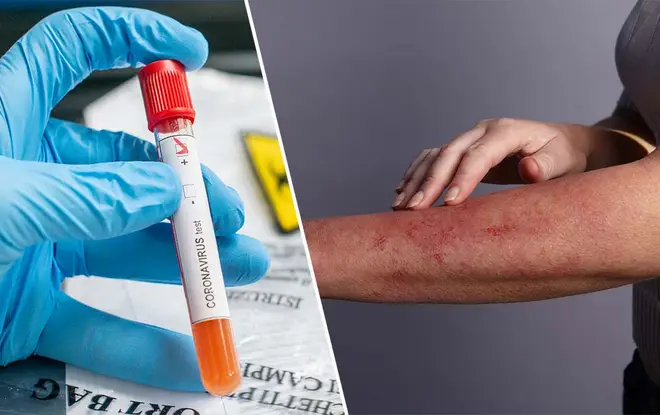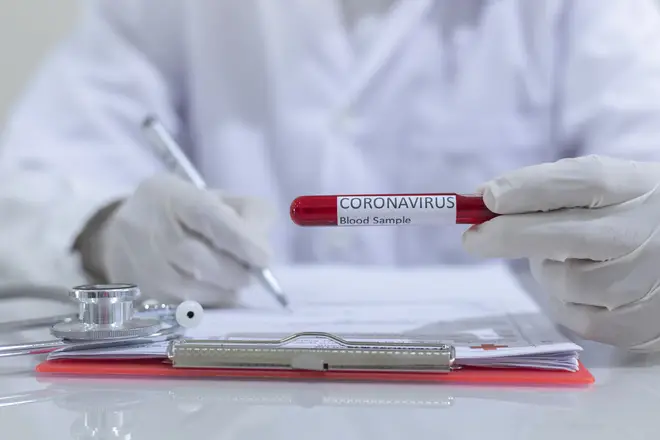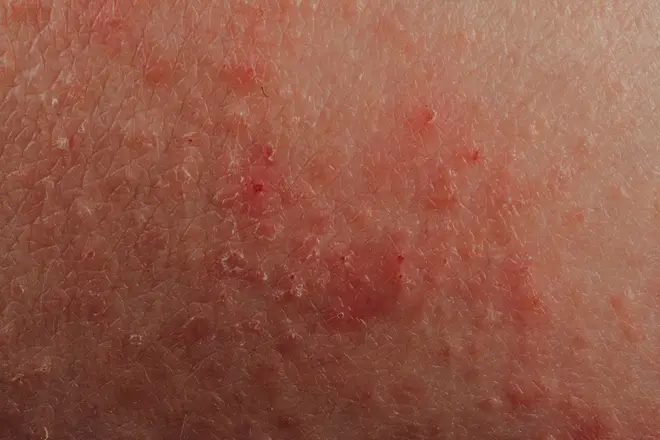Scientists urge Government to add skin rashes to official COVID-19 symptom list
16 July 2020, 11:31 | Updated: 16 July 2020, 11:38

The symptom is becoming more apparent in cases, say scientists, who are calling for rashes to be added to the official NHS symptom list.
Experts have warned that skin rashes could indeed be a tell-tale sign that someone has contracted coronavirus and that it should be recognised as a symptom.
At the moment, the official NHS symptom list doesn't recognise skin rashes, but scientists from King's College London have suggested it should.
READ MORE: Is a skin rash a coronavirus symptom and will it be added to the NHS symptom list?

Their new study looked at data taken from 20,000 UK residents who had tested positive for COVID-19, or were strongly suspected of having it.
In their research they found that 9 per cent of those who definitely had COVID-19 tested had experienced skin rashes, and of those highly suspected, 8 per cent had rashes too.
Following the new findings, scientists are begging for rashes to be recognised by the Government and the NHS as an official symptom of coronavirus.
If done, this could be a great way to help identify cases quicker and would potentially prevent some cases from going unnoticed due to being otherwise asymptomatic.
Currently, there are only three different signs of COVID-19 infection according to the NHS.
![The current NHS list of symptoms only has three things [stock image]](https://imgs.heart.co.uk/images/172892?crop=16_9&width=660&relax=1&format=webp&signature=TEA2tF8GepPQhV-BmCITXC0cbjM=)
There are a fever, a continuous cough and loss of smell/taste, and it's advised if anyone is experiencing these symptoms they should self-isolate and get themselves testes as soon as possible.
However, these sole three signs could mean that those with less common symptoms might not be aware they could have COVID-19 or they might experience delays in getting tests.
King’s College London's scientists used data from 336,837 users of their Covid Symptom Study app for the research, where people have been reporting their symptoms.
From the 27,157 app users who provided swab results, 2,021 (7.4 per cent) tested positive for coronavirus.
Of this group, 178 respondents (8.8 per cent) reported skin rashes.

The study also looked at 17,371 people who were suspected of having coronavirus but had not been tested, and found that 8.2 per cent of people reported a skin rash.
The research was all led by Dr Mario Falchi, who has stated that COVID-19 sufferers have reported they've been suffering from skin rashes for weeks - longer than they had been suffering from the more common symptoms.
It's common for viral infections to come with a side effect of skin rashes, as measles and shingles also have this.
Many viral infections can also cause the skin to break out in rashes or blotches, such as measles and shingles.
Writing in the study, which has not yet been published in a journal or peer-reviewed by other scientists, he said: "An increased awareness from the public and healthcare professionals regarding Covid-19 skin changes will allow more efficient identification of new and earlier clusters of the disease."






















